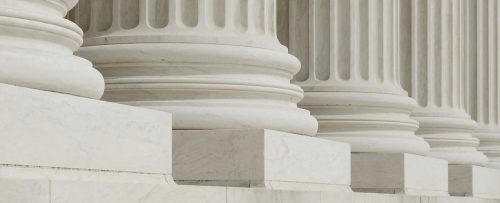
News & Events | CWP Admin
Advisory Board – March 2017 Meeting Summary
March 28, 2017
March 28, 2017
CWP Admin
News & Events
The Advisory Board on Radiation and Worker Health Board held a public meeting in Naperville, Ill. March 22-23, 2017. The National Institute for Occupational Safety and Health (NIOSH), the Department of Energy (DOE) and the Department of Labor (DOL) provided program updates to the Board.
NIOSH Update
Stuart Hinnefeld, Director of NIOSH’s Division of Compensation and Analysis Support, informed the board that NIOSH is receiving approximately 200 new claims for cancer each month. 28% of those claims have a probability of causation of greater than 50% and, are therefore, compensable. He also mentioned that his division is operating on the continuing resolution and that it will end on April 28, 2017, if Congress does not extend it. Mr. Hinnefeld also explained that he does not have any information on the budget for the next fiscal year.
DOL Update
Frank Crawford from DOL gave his presentation via phone. He reported on various statistics about the program. One statistic he offered was the percentage of claims filed for each type of worker under Part B. 61% of claims are cancer claims, which either fall under the dose reconstruction program or the Special Exposure Cohort (SEC). 30% of the claims are for chronic beryllium disease, beryllium sensitivity or silicosis. The remaining 9% of the claims are for uranium workers covered under the Radiation Exposure Compensation Act.
DOE Update
Dr. Patricia Worthington presented for DOE. She reported that DOE has not seen a significant drop-off in record requests from NIOSH and DOL. She stated that, except in very rare instances, DOE is meeting the 60-day timeline to submit the employment records. She reported that Secretary Perry has received a briefing packet on DOE’s responsibility under the program but has not had an in-depth briefing. She also mentioned that, with the transition, some links on the DOE website may be broken. She asked that her office be notified if the public finds such links.
The PowerPoint presentations for the agencies updates, as well as other presentations used during the meeting, can be found on the board’s website.
SEC Petitions
NIOSH provided an update on the status of SEC petitions. NIOSH expects to have evaluation and other reports to the board before August 2017 for the following sites:
- Santa Susanna Field Laboratory, 1991-93
- Metals and Controls, Attleboro, MA, residual period, January 1, 1968 – March 1, 1997
- Los Alamos National Laboratory, Los Alamos, NM, 1996-2005
- Sandia National Laboratory, Albuquerque, NM, 1995-2005
- Laurence Livermore Laboratory, 1990-2014
Hanford and Oak Ridge National Lab are being reviewed to determine if there is a problem with its bioassay program.
Dose reconstruction for claimants from the General Steel Industries plant are calculated using NIOSH’s technical document, TBD-6000, Appendix BB. This methodology was first implemented in 2007 and has gone through several reviews and corrections over the years. The latest document, Revision 2, was discussed. The co-petitioner submitted a critique of Revision 2 in December 2016. The board’s work group agreed with one aspect of the critique and voted to accept that change. All issues with this methodology are now closed.
NIOSH provided more detailed updates for six sites in addition to the sites summarized by Cold War Patriots on March 25:
- Argonne National Laboratory – East
- Idaho National Laboratory
- Kansas City Plant
- Savannah River Site
Argonne National Laboratory does not have an SEC petition to be considered by the board. NIOSH’s presentation focused on issues involving its methodology to reconstruct dose. Among those concerns involve uncertainties in the bioassay methodology, the potential need for co-worker models, internal dose from radon exposure and human radiation experiments.
The review of the SEC petition for the Savannah River Site (SRS) is progressing slowly. This petition was filed ten years ago. Both NIOSH and the board’s technical contractor, Sanford Cohen and Associates (SC&A), provided and update on their activities.
NIOSH intends to provide the SRS Work Group with reviews on thoron and thorium exposures and an evaluation of construction workers. They are also working on a review of data completeness. SC&A is working in tandem with NIOSH on the data completeness issue. SC&A is also reviewing NIOSH’s white papers previously submitted to the work group and will provide comments by June 2017.
Idaho National Laboratory
NIOSH looked at work done in Test Area North (TAN-615) with uranium without fission products, the Auxiliary Reactor Area (ARA-1) where protactinium separation was done, and the Burial Ground for the November 1969 drum retrieval. NIOSH feels confident that it has sufficient data to reconstruct dose for all three of these areas and does not recommend expanding the SEC definition to cover them.
NIOSH will continue evaluation of the work done in the burial ground after the 1970 SEC cut-off period. If necessary, it will implement procedures to expand the SEC to cover this work.
NIOSH expects to complete its proposal for expanding the Chemical Processing Plant (CPP) SEC and present this at the next full board meeting in August.
Kansas City Plant
Josie Beach, the Chair of the Kansas City Plant (KCP) Work Group, reported that all remaining issues had been closed at the March 2, 2017 work group meeting because they could be included in the Site Profile.
The work group will continue to look into whether Magnesium-thorium operations were ongoing at KCP from 1963-70. This will remain an issue for continued follow-up to determine exactly when this work was finished.
